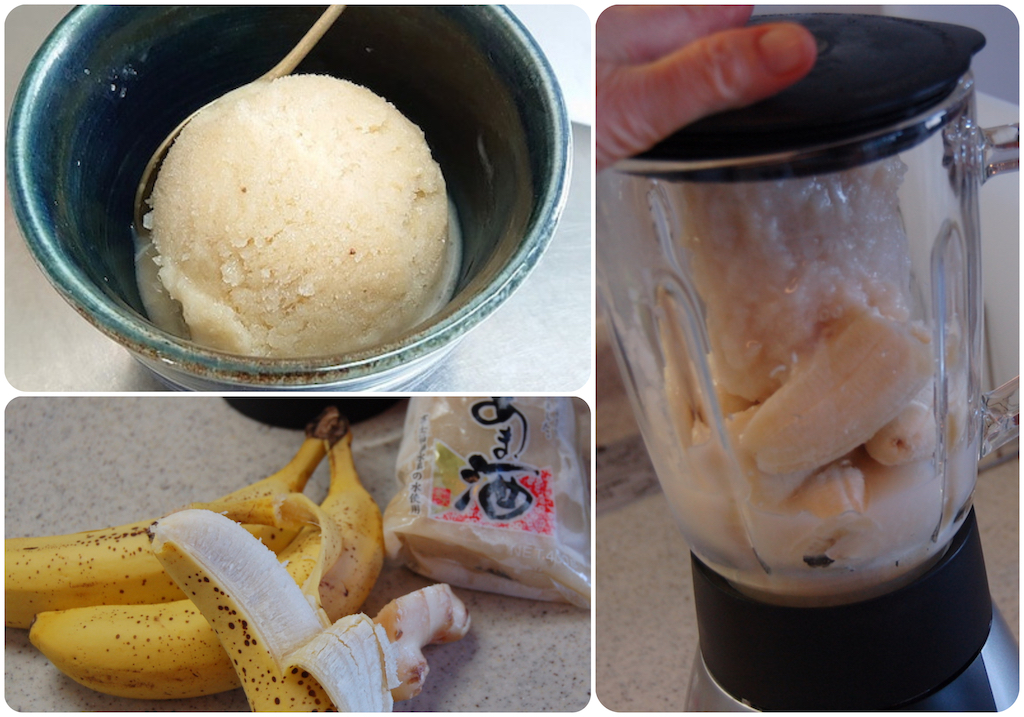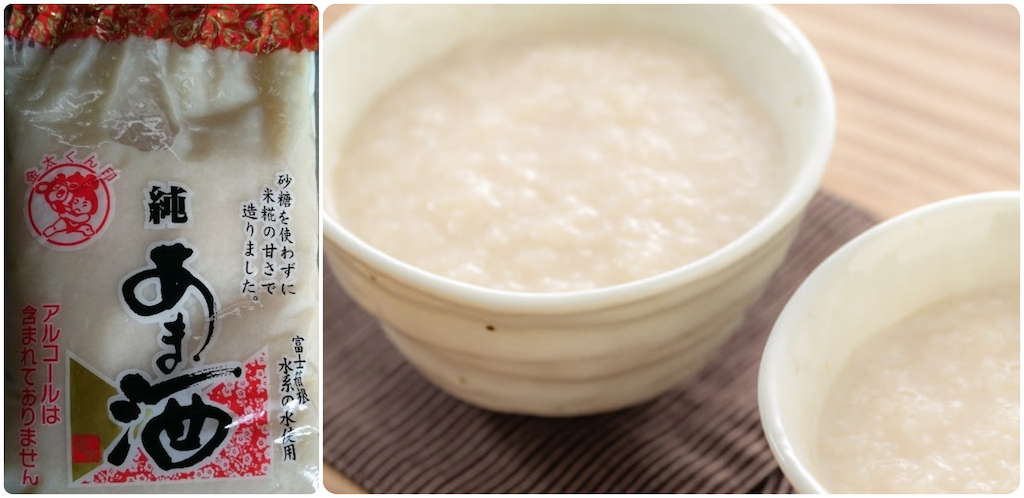
Frozen Ices made with AMA-ZAKÉ
Ama-zaké has been part of the Japanese pantry for thousands of years. During the Muromachi period (1392-1573) ama-zaké consumption took on a regional identity: In and around Kyoto, it was sipped in the summertime as a stamina drink to fortify a heat-weary metabolism, while in the Edo plains (what is now Tokyo) it was a drunk to ward off chills on frigid nights. Frozen desserts made from thickened ama-zaké are a modern adaptation. My favorite is BANANA-GINGER.
DOWNLOAD a recipe for AMA-ZAKÉ AISU
Visit the KITCHEN PROJECT for suggestions on making various flavored ices.

About AMA-ZAKÉ
Ama-zaké means “sweet liquor,” though the traditional type made from cooked rice and malted rice (komé kōji ) has an alcohol content of less than one percent. Ama-zaké is highly nutritive: rich in health-boosting probiotics and metabolism-boosting digestive enzymes. It is rich in vitamin B and essential amino acids; the high glucose level is essentially an energy shot.
Ama-zaké needs to be refrigerated and should be consumed by the date indicated on the package. Or, freeze it to extend shelf life by several months. And by freezing it you’ll be able to make this fabulous frozen dessert: Ama-Zaké Aisu.
In making ama-zaké (sweet rice mash) equally amounts of cooked rice, and komé kōji (the same healthful mold spores used to make miso) are mixed and allowed to sit for 6-8 hours. During this time, the micro-organisms in kōji break down the rice starches and convert them to sugar. The result is a sweet mash, with bits of rice suspended in a thick, cloudy liquid. Because fermentation is not allowed to continue, the alcohol level is extremely low (it does not need to appear on the label). Traditionally ama-zaké has been served to children.
You can make your own ama-zaké if you can source komé kōji. Friend/colleague NAMI CHEN of JustOneCookbook has a great recipe on her site. As Nami points out, TEMPERATURE CONTROL is key to success,




